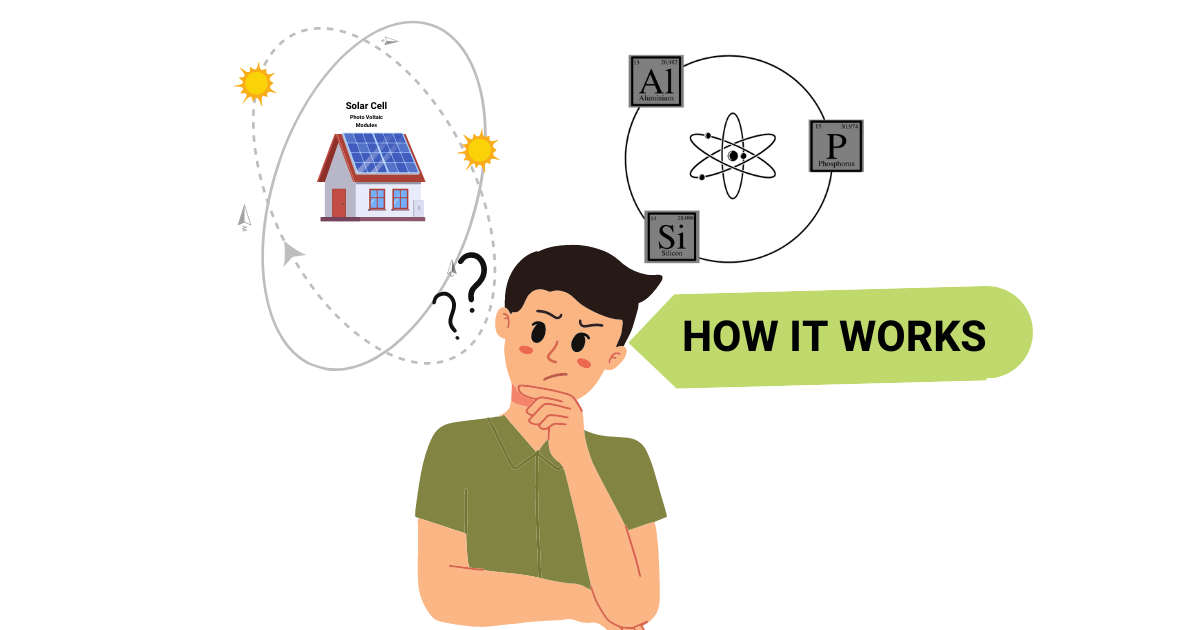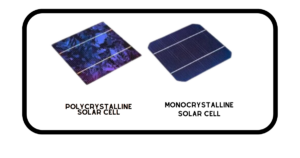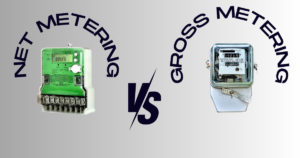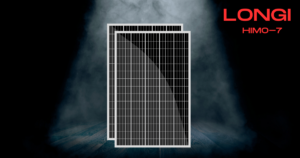Understanding the intricacies of how solar panels are manufactured and operate is key to appreciating their vital role in sustainable energy production. From the initial fabrication of silicon wafers to the final assembly of photovoltaic cells, the journey of a solar panel from concept to installation is a fascinating blend of science, engineering, and innovation. We will discuss how solar cells or solar power plants work. It gives us DC current and we get AC. There are two types of solar plants, one is of black color and the other is of blue color.
Content Table
- Solar Panel Manufacturing Process
- What is Doping
- Doping With Aluminium
- Doping With Phosphorus
- P-Type Silicon
- P Type & N Type Panel
- What is Depletion Zone
- What is p-n Junction
- Bulb
- How N Type Panel Became Superior
- Solar Cell
- Back up System
- Procedure
- Panel Glass Role
- Layers of Panel
- Solar Cell Capacity
- What is Solar Array
- Mono-Crystalline vs Poly-Crystalline
Manufacturing Process
We need silicon to make solar cells.
We get silicon easily. The silicon oxide, we mix the sand with carbon and heat it in the furnace at 2000 degree Celsius. We can easily extract silicon from it.
The atomic number of silicon is 14. It is a semiconductor. In some conditions, it allows the current to flow and in some conditions, it does not allow the current to flow.
So this is our semiconductor. Silicon is used for this. The outer cells of silicon have four electrons.
Doping
Now we make this silicon do doping.
We mix something different in it. Mixing something different in another element is called doping. In a way, it is called doping.
This doping can be done with two things. We can use an aluminum. In some amount of silicon, we inject aluminum and do doping.
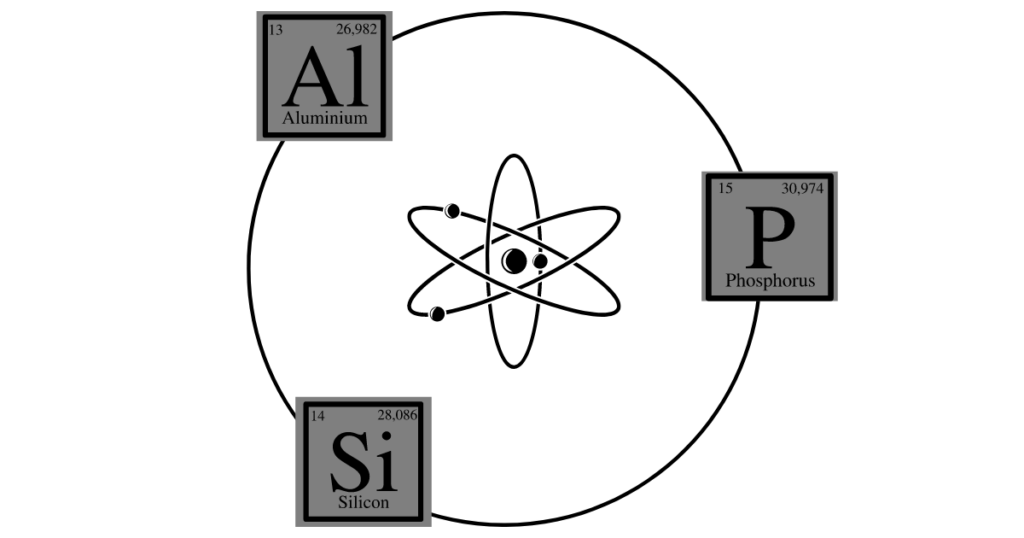
Doping with Aluminium
The specialty of aluminum is that it has three electrons in its outer cell. How many electrons does it need? Four. So when we put aluminum in it, it needs four.
Aluminum has three. So if it needs four and three, it will still have a shortage of one electron. So when we do doping of aluminum in silicon, then this silicon starts looking for an electron.
Doping with Phosphorus
Will I get an electron? It starts looking for it. But when we do doping of phosphorous instead of aluminum, then there are five electrons in the outer cell of phosphorous. Because its atomic number is 15.
So in the first cell, there are two. Then in the second cell, there are eight. Two, eight, ten.
In other words, five. When we do doping of phosphorous, which is a five-component substance, then what happens? How many electrons does it need? Four. Now when we mix phosphorous, how many electrons are there in the outer cell of phosphorous? Five.
Now what will it do? It will have an extra electron. Now if there is an extra electron, then it will start looking for it. Does anyone want an electron? Take it.
But as soon as we do doping, then a negative, a positive quality starts coming in it. If we do doping of phosphorous, then it gives five electrons. That’s why it has an excess of electrons.
Because the electron is negative, that’s why it has an excess of negative. And if you give aluminum in it, then there are only three electrons in aluminum. So there is a shortage of electrons.
Because the electron itself is negative. So when there is an excess of electrons, then we call that type of silicon negative silicon or n-type. And when we mix aluminum, then there is no excess of electrons in aluminum.
P-type silicon
So what will we do in that? We call it positive type silicon or p-type silicon. In this way, we can divide the silicon into two parts. A p-type silicon has no excess of electrons.
And n-type silicon has excess of electrons. N means negative. Why did it come negative? Because the electron itself is negative.
P-type and N-type

Wherever it goes, it makes it negative. So in this way, a negative becomes positive, which we call p-type and n-type. These are two different types of silicon, which are made after doping.
When we join them together, then look, silicon will not do anything. But you see why it was made negative. Why was it made negative? It was made negative because it had more electrons of negative charge, i.e. more phosphorus.
So that phosphorus will come to this side. It will leave the silicon atom there. And if we look at it, then why was this p-type positive made? Because it had a shortage of electrons.
Where the electron is less, there is a quarter or hole. So that’s why it’s called positive.
Depletion Zone
Aluminum will come here. And they will share their positive and negative. As soon as they start sharing, the middle area is called the depletion zone.
This area does not allow the electron to move forward or backward. So this type of area is called p-n junction.
Now how do we get electrons from this p-n junction? Look, this is negative, i.e. electrons are more. If we give it heat from here, If we give heat from here, then it already had more electrons. It was a negative type.
And if it gets heat, then the neutron inside it will start coming out. Now it will start coming out. Don’t go from here.
But we will not let it go from here. Because this is the depletion zone. It will not go from here.
Now it has to come out. How will it go? So you connect a wire from here. Then the electrons will start coming out from here. Connect this switch.
p-n junction
Now the electrons have reached here. The circuit is complete. Now if you put a bulb here, then this bulb would have been lit.
So you understand that the p-n junction that we have made, in this p-n junction, we will give heat to only the negative one. We will excite its electron. So this electron will start flowing.
Look here, this red one is a positive type. A quarter or hole will be found here. There is a lack of electrons in it, so it is positive.
There is a lot of electrons in it. Depletion zone is in the middle, so the electron will not be able to go from here to here. Now we give heat to it from here.
Now as soon as we heat it, the electron will come out. The electron will run from here like this. The electron is running from here.
Purpose of Bulb
Now what will this bulb do? The bulb will pass through this bulb. As soon as the electron passes through the bulb, the bulb will light up. Now this electron has gone here.
It is complete. This circuit is here. The bulb is lit.
How N-Type Beat P-Type
What did we spend? Only to give heat from here. So the scientists thought that rather than giving heat, it is better to give sunlight. What does sunlight do? It will rise above the threshold frequency.
So it will also remove electrons from it. Now there was another problem in this that we had to give sunlight only to the N type. Because there is a negative in N, that is, there are more electrons in it.
So the scientists reversed this. That is, they lowered the P type and raised the N type. And made a solar cell from it.
In the solar cell, if you say which junction is used, then P-N junction. But remember, in the solar cell, the negative one is above. Because the negative one will give electrons.
And the positive one is below. Second thing, the thickness of the negative one is very low. See, the solar plate itself is so thin like this.
But even in that, the negative one is less thin. And the positive one is a little thick. This is thin, this is thick.
Now if you do doping in this, see from here, what is your incidence light? Light is coming from here.
As soon as the light comes on it, electrons will start coming out of the negative type.
And it will not give way from here, this is the depletion zone. Then it will go from here. Now if it goes from here, then you have a mind.
So you connect a bulb here, connect a fan. Otherwise, connect a wire from here and take it to the power pole. Electrons will come out from here, directly on the power pole.
What is the bad thing about this solar cell?
Now connect as many houses as you want So this is your solar cell. What is the bad thing about this solar cell? The current it generates, it generates direct current. Because you will see, the direction of direct current does not change.
Its direction does not change. Now you can store this direct current in the battery. But what do you want instead of direct current DC? In AC.
So to convert DC to AC, an inverter is required. That’s why the energy that comes from it, you store it in the battery. When you have to run it at home, what can you do? You can put an inverter.
Backup Requirement
If you want to store, then you need a battery. And if you don’t want to store, you want to use it directly, like the sun came out, immediately from the solar plant, then you will not need a battery. But if you want to store, then you need a battery.
How It Works?
So what is done? The solar parks, the big solar power plants, what is there in this? They keep taking up so much space themselves. It comes with a budget of millions. Now if you buy a battery, then there is separate money on it.
That’s why they don’t buy a battery. They have laid a solar plant directly here, from here to here. And they put their inverter here.
They store all the current at one place, and bring the inverter. The inverter converts that current to AC. You know that the transformer cannot work in DC.
The AC current created by this inverter, will increase its voltage a lot. And it will give the grid directly.
Now send this grid, wherever you want to send it, in whichever direction you want to send it. So what we make, we need a battery for that. But the government that makes it, does not use the battery.
And it sends it directly to the grid. See, there are many layers of solar cells. The layer you are seeing, this is not a layer at all.
The main thing is, there is a glass layer on top of it. This is a frame, it is put from the side. Nothing happens from above.
So this is a glass of a glass. What does this glass do? It protects it from injury, from scratches, from dust, from all these things. Water does not let them in.
What is the biggest job of glass?
If you do not put this glass, then the solar energy that comes on it, it reflects 50% and sends this solar cell. So brother, it sends back all the energy it gets. Then your work cannot be done.
That’s why the glass is put here. This glass, it only lets the light return by 5%. It does not let the light return except that.
A coating is done inside it. Encapsulant is applied. What does it do? Encapsulant protects it from moisturization.
It does not let it get wet. And whatever energy has come, it absorbs that energy. This layer here, this layer just below the glass, it absorbs all the energy.
That this solar cell, this blue color, it can get energy completely. And the main part of the solar cell is the solar cell. Its construction has been understood.
Layers
It will have two layers. The upper one is N-type, the lower one is P-type. That’s it.
Electrons will come out of N-type. It will go to P-type. The circuit will be complete.
Below that, we put a coating.
And from here, the supply of current is sent. So the glazing of this is very important. Now, if you put this layer on top of each other, it will scatter like a biscuit.
Solar Cell Capacity
Its capacity is so low, 0.5 volts, that is, half a volt. Nothing works in half a volt. In our country, the fan also runs at 220 volts.
At 12 volts, the battery and other small bulbs run. So, it gives 0.5 volts. So, this solar cell is of no use.
But, what do we say? Unity has strength. You must have read. Unity has strength.
When you collect this solar cell in many places, it becomes a solar module. Now, see here, this is alone. So, this is a solar cell.
And what is this made? This is a solar module. There are 72 solar cells in this solar module. Now, the voltage of one cell is 0.5. So, how much voltage will be generated from 72 cells? 36 volts.
36 volts, so, the voltage has increased. Now, we have to do more than this. What you buy from the market, you bring a plate like this.
So, you buy a solar module. They say, they have bought solar panels. So, this is a solar module.
The voltage has increased in this. Now, we found out, make a group of this too. So, when you make a group of a solar module, then we call it a solar panel.
A person brings a solar module. But, you see, a person puts it on top of the house. So, what does he put? Your solar panel.
What is Solar Array?
And, if you have to put it on top of the whole roof, in a large area, then it is called a solar array. This is even more. Just increase the number of this.
And, if you want to increase it from the solar array, then you put a solar park at once. So, fill your entire field in 20 acres. So, this is your solar park.
After that, they have to be cleaned. If the dust settles, they will not work as well. If there is a cloud, they will not work as well.
When it rains, they will not work as well. And, they cannot work for 24 hours because they work Now, these solar cells, that is, the number of modules and cell buses is increasing. So, it also has three categories.
Monocrystalline vs Polycrystalline
Basically, only two main uses are there. One is monocrystalline and one is polycrystalline. And, one is thin film.
The use of thin film is very less. It is thin and is used very little.
It is not used much. So, we will not discuss it. Just understand here.
The black one is monocrystalline and the blue one is polycrystalline. This one is better and this one is less good. It will work even in low light.
For this, it needs full light. In this, it will work even if there is a cloud. For this, it does not need a cloud.
But, if you have proper sunlight, then apply blue one or polycrystalline. And, if there is not enough sun, then apply monocrystalline. Government usually applies monocrystalline because they have to invest once.
In monocrystalline, you will see that you will get this type of circle. That means, its cells are not in cross. They are slightly rotating here.
In this type. Because of which you will get a circle here. Whereas, its cells are in square.
So, you can see its lining here. So, Overall, there is no difference between There is only difference If you invest more money, you will get more good things. If you invest less money, you will get less good things.
FAQ
What is Solar Cell?
A solar cell, also known as a photovoltaic cell, converts light energy into electricity through the photovoltaic effect. These devices, often used as building blocks for photovoltaic modules, can operate under sunlight or artificial light and can also serve as photodetectors for light detection or intensity measurement.
What is Solar Grade Silicon/Bulk silicon?
Bulk silicon cells, based on a p-n junction, are produced from wafers between 160 and 240 micrometers thick, separated by crystallinity and size.
What is Monocrystalline silicon?
Monocrystalline silicon solar cells have a single-crystal composition, allowing electrons to move freely, resulting in higher efficiency. They have clipped corners and a distinctive white diamond pattern on their wafer material.
What is Polycrystalline silicon?
Polycrystalline silicon cells, made from cast square ingots, are commonly used in photovoltaics due to their cost-effectiveness but lower efficiency compared to monocrystalline silicon.

